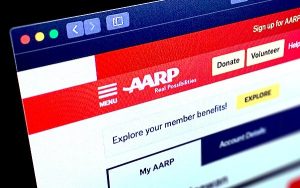Nearly everyone in business knows what ROI stands for (return on investment, for the six of you who didn’t). As entrepreneurs and business leaders, we are always asking ourselves, if I invest my (time, money, or team) in X endeavor, what is the return on said investment? What will the results yield relative to my investment?
Have you ever considered your R.O.F.? That is, your ‘return on facilitation’? No doubt you’ve been a part of a facilitated session where a third party professional leads your team through various exercises. Maybe an icebreaker to start, then learn a new concept, straight into brainstorming and then out come the Post-it® notes.
Chances are, your entire executive team (or business unit) has been whisked away for day days. That could have a direct cost of over $ 8,000 plus the cost of your facilitator (probably a minimum of $ 5,000 – $ 10,000+), facility rental, and food and entertainment. For many groups, the tab can grow to well over $ 35,000. If the facilitator has to travel, add thousands more. If done twice a year, that’s a good salary for a new team member chewed up in just four or five days.
As a certified executive coach and corporate facilitator, in no way am I calling this a waste of money. I’ve seen many business-saving breakthroughs in facilitated sessions, both as an executive, and as a facilitator. The purpose in writing this piece is to help you and your team A) adequately prepare for such sessions, and B) maximize your return on investment from a facilitated session – your R.O.F.
Pre-facilitation preparation
In order to create the most enjoyable, productive, and focused environment possible, I recommend these eight steps.
- Decide as an executive team what the central issues facing your organization are. Perhaps you’ve already completed an internal SWOT analysis. Maybe instead the board of directors or shareholders are demanding a certain profit margin or share price. Perhaps you’re a sport organization facing funding shortfalls and declining participation. Decide on the key issues that must be tackled in your time together, be it three hours or two full days.
- Perhaps directly related to above, decide on the intended outcomes of your time together. This might be the board chair and the executive director of a not-for-profit. It could even be your entire executive team; in any case – know what you want on the way out before you’re on the way in.
- Know who needs to be there. An executive being paid $ 125K per year is being paid $ 480.77 per day. If this happens to be your CFO, and your meeting is all about an internal rebrand, bring them in for the session on strategy, and anything affecting the budget. Let them return to their priorities the entire rest of the time (especially because you are probably paying your CFO more than $ 125K)! Furthermore, a team member who has 45 minutes of meaningful contribution to a 2-day facilitated workshop is more than likely spending the other 15 hours and 15 minutes becoming actively disengaged. This is how you lose key people. The focus of the session dictates the brains you need in the room. More isn’t better – better is better. Let expertise and perspective, not just job title, be the deciding factor.
- Know the personalities of who is there. Your facilitator might catch on that John tries to control the meeting, or that Sara is much more introverted and often doesn’t feel comfortable sharing her great ideas. Or – they might not. Unless you’ve found a highly experienced and intuitive facilitator (or one who’s worked with your team before) there are two things you can do to create a better game day environment;
- Pre-communicate with your facilitator who the key players are, and how they behave in meetings. “You might have to ask Richard questions for him to share, and you might not want to go to Kelly every time they put their hand up or no one else will get a chance”.
- More importantly, pre-communicate with your team the ground rules for the session(s). While your facilitator will likely have several of their own (see next section), a few you can implement are;
- All team members must treat each other with respect
- We live our core values at the conference center just like we would at head office
- Meetings start on time
- No phones on/ used during sessions unless it’s to take photos or record (when appropriate)
- Don’t show up to day two so hungover that you can barely stay awake, let alone contribute (it happens)
- All team members must treat each other with respect
- Pre-communicate with your facilitator who the key players are, and how they behave in meetings. “You might have to ask Richard questions for him to share, and you might not want to go to Kelly every time they put their hand up or no one else will get a chance”.
- Share the agenda in advance. If your culture is highly collaborative, grab a few key team members ahead of time to share thoughts or give feedback on your proposed agenda.
- Set your team up for success. Don’t ask for a ‘state of affairs’ assessment from any team member on the spot. In facilitator lingo, chances are your CFO or COO are ‘green analytic-autonomizing’ types. They need time and data to make their decisions. If you give them a heads up (1-2 weeks depending on what you require) they will likely blow everyone’s socks off with their data analysis. The same is true for customer service. They need time to conduct surveys or interviews if you want to know what your stakeholders really think. If you want customer data trended for your session, you probably need to give them several months’ notice.
- Ensure there is plenty of coffee, water, and snacks. This may seem like a little thing, but a tired, hungry team member is a distracted team member.
- Be organized. Do all of the flip chart pens work? Did we bring the flip charts? Is the PowerPoint presentation on a flash drive? Do we have a backup, and the appropriate HDMI or other connections/ wires required? If team members are responsible for their own travel, have your supplied them with crystal clear directions? This is especially important in present day pandemic times with vaccine passports, masks, and travel restrictions. Make sure you have mentally gone through the entire session so that you know exactly what to tell your team to come prepared with. Going for a hike after the morning session? Don’t forget to tell your team to bring clothes for the weather, snacks, a water bottle, and comfortable hiking shoes. In foreign countries, things like your home country’s embassy location and emergency numbers should be included in the pre-session info package you circulate. Oh, yeah – don’t forget to circulate the pre-session info package ahead of time!
In-session best practices
In addition to the above pre-session considerations, there are also a number of best practices while in session. These include, but are not limited to;
- Frame the agenda for the day (usually the CEO or facilitator). If this is day two, you might also include a review of day one. If applicable, review any evening work to be completed for the morning’s session.
- Where are the washrooms? When are the breaks, and lunch? In the case of emergency, where is your groups muster point? These all become really important if your team has never been to Sacramento or Seoul before!
- In the brainstorming session, no debating is allowed. As soon as Greg hears Mary’s idea shot down, he’s likely to clam up for the rest of the brainstorming session. By writing down every idea that comes from your team (no matter how bad you think it is) you are creating psychological safety for your team which is essential to full participation.
- Per above, set the intention, or ground rules, for each session, even if it seems obvious. “No one else talks while your team member is speaking” or “speak up if you need to use the facilities so we can break and have several people time their break instead of ad hoc throughout the day”.
- Similar to above, it’s often helpful to ‘chunk’ sections of the agenda based on the kind of brainpower and emotional engagement involved. You might commence the strategic offsite on the first evening at dinner with a review of the previous year, celebrating the teams’ accomplishments. You might also separate a two-day agenda into personal development, teambuilding and learning on day one, and strategy and planning on day two. Lay out all that you want and need to cover in advance, and then group accordingly based on steps one and two from the pre-session preparation.
- Conclude each section (or at least, the cumulative set of ideas and strategies) with action, accountability, and assessment.
- Action: what are we going to do? Talk is great, but only action drives results
- Accountability: who is in charge of this? Who needs to support?
- Assessment: what does success look like? Is it a number? A Date? Who is in charge of generating a dashboard for our important accountabilities, and how often are we reviewing?
- Action: what are we going to do? Talk is great, but only action drives results
- End on a high. Even if your strategic offsite has been full of drama, emotion, and tough decisions, find a way to end on a high. This could be a team appreciation exercise, a teambuilder, or even happy hour as a team. Bond as a team before you break for the day.
- Collect feedback. If you’ve hired a facilitator, typically leadership (usually HR) will collect surveys from the team, trend them, and send a follow up report so that each members’ responses remain anonymous.
All in all, these 16 strategies will help you have better meetings, get more done, enjoy the process more, and maximize your R.O.F. Two days away from day to day operations is either a sunk expense, or a valuable investment in the health and future of your organization. It’s up to you to grow your R.O.F.!
Business & Finance Articles on Business 2 Community(36)








